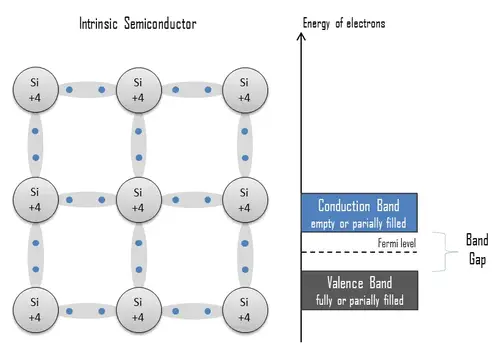A selenium diode is a semiconductor rectifier composed of a selenium layer between two metal electrodes, used historically in electronics.

Selenium Diode: A Comprehensive Guide
Introduction to Selenium Diodes
Selenium diodes, a type of semiconductor diode, have been utilized in various electronic applications for several decades. Although they have been largely replaced by silicon diodes in modern electronic devices, they remain an interesting subject for electronic enthusiasts and historians. In this article, we will explore the properties, operation, and applications of selenium diodes to better understand their historical significance and continued relevance.
Properties of Selenium
Selenium is a non-metallic element with the atomic number 34, belonging to the chalcogen group on the periodic table. It has unique electrical properties, including its ability to exhibit photoconductivity, where its electrical conductivity increases with exposure to light. Selenium’s semiconducting properties make it an ideal candidate for creating diodes. In its pure form, selenium acts as a semiconductor, but it can be doped with impurities to modify its electrical characteristics.
Construction and Operation of Selenium Diodes
Selenium diodes consist of a thin layer of selenium sandwiched between two metal electrodes, often made of aluminum or iron. The selenium layer is typically doped with a small amount of an impurity to create either an n-type or p-type semiconductor. The diode can be formed by either evaporating the selenium onto the metal substrate or by sintering the selenium powder onto the metal.
The operation of a selenium diode is based on the principle of rectification, which is the conversion of alternating current (AC) into direct current (DC). When a voltage is applied across the diode, the electric field allows charge carriers to flow in one direction while blocking their flow in the other direction. This unidirectional flow of current is what makes diodes useful for rectification.
Advantages of Selenium Diodes
Selenium diodes offer several advantages over their more modern silicon counterparts. Some of these advantages include:
Low reverse leakage current: Selenium diodes have a low reverse leakage current, which means they can effectively block the flow of current in the reverse direction, making them efficient rectifiers.
High voltage rating: Selenium diodes can handle high voltage levels, making them suitable for use in high voltage applications.
Temperature stability: The electrical characteristics of selenium diodes remain relatively stable over a wide temperature range, which can be advantageous in certain applications.
Low forward voltage drop: The forward voltage drop of a selenium diode is lower than that of silicon diodes, resulting in less power loss during operation.
Historical Applications
Selenium diodes were commonly used in various electronic applications during the mid-20th century, including power supplies, voltage regulators, and radio receivers. One notable application was in early photocopiers, where selenium diodes were used as photodetectors to sense the light reflecting off the document being copied. However, as silicon diodes became more prevalent and affordable, they gradually replaced selenium diodes in most applications.
Modern Applications and Relevance
Although selenium diodes have been largely replaced by silicon diodes in contemporary electronic applications, they still find use in some niche applications and as components in vintage electronics restoration projects. Enthusiasts and hobbyists often seek out selenium diodes to maintain the authenticity of their vintage electronic devices or to experiment with the unique properties of these components. Furthermore, researchers may investigate the characteristics of selenium diodes for academic purposes or in the development of new materials and devices.
Replacing Selenium Diodes with Silicon Diodes
In cases where a selenium diode has failed in a vintage electronic device, it may be necessary to replace it with a modern silicon diode. While this is generally possible, there are a few considerations to keep in mind when making the switch:
Voltage drop: Silicon diodes typically have a higher forward voltage drop than selenium diodes, so it may be necessary to adjust the circuitry to account for this difference.
Leakage current: Silicon diodes can have higher reverse leakage current than selenium diodes, which could affect the performance of the circuit.
Thermal considerations: When replacing a selenium diode with a silicon diode, the heat dissipation characteristics of the new diode should be taken into account, as they may differ from the original component.
Safety Concerns
It is essential to be aware of the potential hazards associated with handling and disposing of selenium diodes. Selenium is a toxic element, and improper handling, storage, or disposal of selenium-containing components can pose risks to human health and the environment. When working with selenium diodes, it is important to take appropriate safety precautions, such as wearing gloves and protective eyewear, and to follow local regulations regarding the disposal of electronic waste containing hazardous materials.
Conclusion
Selenium diodes, once a staple in mid-20th-century electronics, offer a fascinating glimpse into the history of electronic components and the evolution of technology. Although largely replaced by silicon diodes in modern applications, they continue to be of interest to electronic enthusiasts, hobbyists, and researchers. Understanding the properties, operation, and applications of selenium diodes provides valuable insight into the development of electronic devices and highlights the importance of ongoing research into new materials and technologies.



